Step Inside the Khitan Royal Tombs: An Enchanting Experience of Ancient Culture
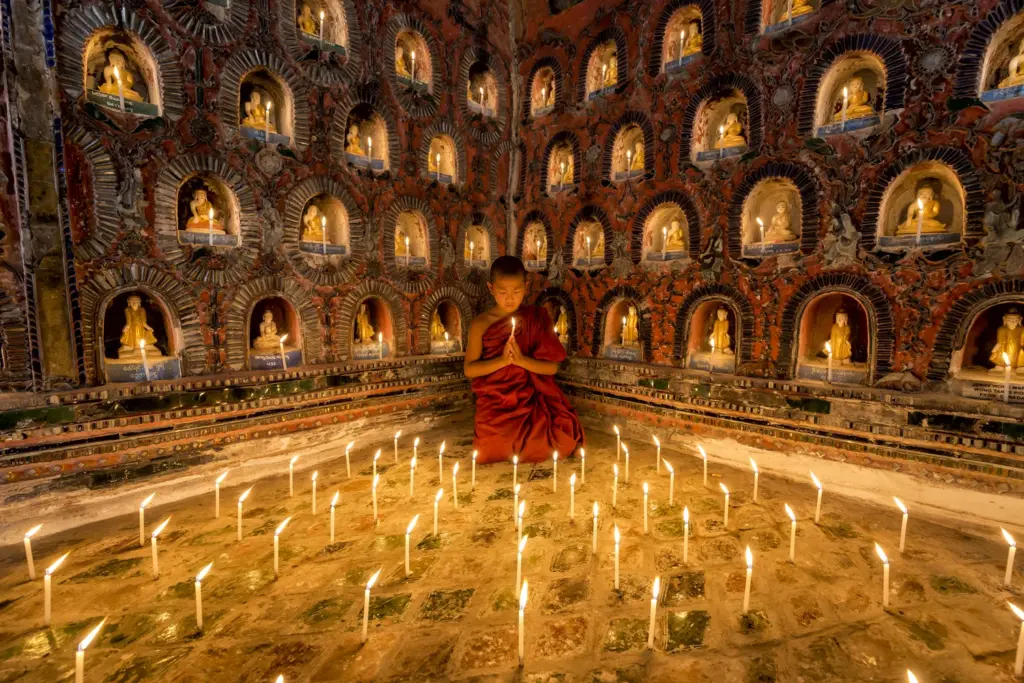
An Essential Guide to Visiting Khitan_Royal_Tombs
Steeped in history and shrouded in mystery, the Khitan Royal Tombs (辽陵及奉陵邑) stand as a testament to the grandeur of the Khitan dynasty, which reigned over northern China during the 10th to 12th centuries. Nestled in the serene landscapes of modern-day Inner Mongolia, these ancient burial sites offer an exceptional glimpse into the past, where emperors were laid to rest amidst intricate artistry and strategic feng shui.
Visiting the Khitan Royal Tombs is not merely a journey through time; it’s an immersive experience that invites you to wander through beautifully preserved grounds, adorned with monumental stone carvings and expansive tomb complexes. As you step into this historical realm, you’ll uncover the fascinating stories of the Khitan people, their rich culture, and the elaborate rituals surrounding death and the afterlife that once defined their civilization.
For international travelers seeking an authentic adventure off the beaten path, the Khitan Royal Tombs promise a unique blend of history, architecture, and natural beauty. Whether you are an ardent history buff or simply looking to explore something extraordinary, this guide will help you navigate the tombs’ breathtaking landscapes, providing essential tips and insights to enhance your visit. Prepare to delve into the echoes of a bygone era and discover the legacy of one of China’s lesser-known dynasties.
In This Guide
- An Essential Guide to Visiting Khitan_Royal_Tombs
- The Rich History and Legends of Khitan_Royal_Tombs
- Main Highlights: What You Absolutely Can’t Miss
- Planning Your Visit: A Practical Guide
- Tickets: Prices, Booking, and Tips
- How to Get There: A Complete Transportation Guide
- Local Cuisine and Accommodation Nearby
- Frequently Asked Questions
- Final Thoughts on Your Trip
The Rich History and Legends of Khitan_Royal_Tombs
The Khitan Royal Tombs, nestled within the vast expanse of Inner Mongolia, are a testament to the rich history and cultural heritage of the Khitan people, who ruled over parts of northern China during the Liao Dynasty (907-1125). These tombs, also known as the Liao Tombs, are not just burial sites but are imbued with the legends and legacies of an era marked by significant advancements in art, architecture, and governance.
The Khitan people, originally a nomadic tribe, established the Liao Dynasty after unifying various tribes in the late 9th century. The dynasty was characterized by its dual administrative system that integrated both nomadic and agrarian traditions. This unique blend allowed the Khitan to thrive economically and culturally, making them a formidable force in East Asia. The tombs reflect this synthesis, showcasing architectural styles that blend Chinese, Mongolian, and even Tibetan influences.
One of the most notable aspects of the Khitan Royal Tombs is their grand scale and intricate design, which echo the reverence the Khitan had for their rulers. The tombs are often surrounded by ceremonial walls and feature elaborate stone sculptures, including guardian figures that are said to protect the resting places of the deceased. Each tomb is adorned with ornamental carvings and inscriptions that tell the stories of the emperors and their accomplishments, offering a glimpse into the lives of those who once wielded great power.
Among the most famous of these tombs is the one belonging to Emperor Yelu Dashi, the founder of the Liao Dynasty. His burial site is known for its unique structure, which combines traditional burial customs with innovative architectural techniques. Legend has it that Yelu Dashi’s spirit continues to watch over his people, and many locals still visit the site to pay homage and seek blessings for prosperity and protection.
Travelers to the Khitan Royal Tombs can immerse themselves in the legends that surround these ancient burial sites. Local guides often share stories of the emperors’ exploits, including tales of bravery, wisdom, and the trials faced during their reigns. The tombs are not merely historical relics; they embody the spirit and resilience of the Khitan people, serving as a reminder of their significant role in shaping the history of East Asia.
Visiting the Khitan Royal Tombs is an experience steeped in history and legend. The serene landscapes that encompass these tombs enhance their mystique, as visitors are transported back in time to an era of emperors and empires. Whether it’s the intricate carvings, the grand architecture, or the captivating stories, the Khitan Royal Tombs offer a profound insight into a civilization that, while often overshadowed by its contemporaries, left an indelible mark on history.
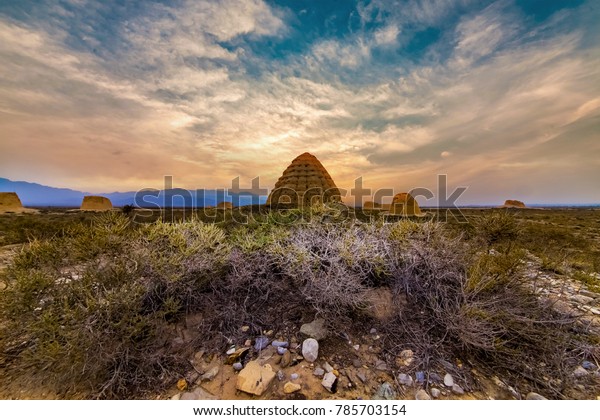
Khitan_Royal_Tombs.
Main Highlights: What You Absolutely Can’t Miss
When visiting the Khitan Royal Tombs, located in the heart of Inner Mongolia, you’ll encounter a site steeped in history and cultural significance. Here are the main highlights that you absolutely cannot miss during your exploration of this remarkable burial ground.
1. The Tombs Themselves
The Khitan Royal Tombs are a stunning testament to the Liao Dynasty, which flourished from the 10th to the 12th century. This UNESCO World Heritage site features over 100 tombs, showcasing the architectural prowess of the Khitan people. The most notable tombs belong to the founders of the Liao Dynasty, including Emperor Taizu and his successors. Each tomb is distinct, reflecting the status and achievements of its occupant, with intricate carvings and elaborate stone structures.
2. The Scenic Surroundings
Nestled in a serene landscape of rolling hills and lush greenery, the Khitan Royal Tombs offer breathtaking views that enhance the experience. The natural beauty surrounding the tombs creates a tranquil atmosphere, perfect for contemplation and photography. Be sure to explore the pathways that wind through the area, allowing you to fully appreciate the harmony between the man-made structures and their natural environment.
3. The Unique Burial Practices
A visit to the Khitan Royal Tombs provides insight into the unique burial customs of the Khitan people. The tombs are characterized by their above-ground construction, a departure from the underground burial practices commonly found in other cultures. Observing the layout and design of these tombs can provide a deeper understanding of the spiritual beliefs and rituals that governed the Khitan way of life.
4. The Artifacts and Relics
While exploring the site, you may encounter various artifacts and relics that have been uncovered during archaeological excavations. These items, ranging from pottery to jewelry, offer a glimpse into the daily lives of the Khitan elite and their artistic expressions. Take the time to read the informative displays, as they will enrich your understanding of the Liao Dynasty’s cultural heritage.
5. The Museum of Khitan Culture
Don’t miss the nearby Museum of Khitan Culture, where you can delve deeper into the history and legacy of the Khitan people. The museum houses an extensive collection of artifacts, historical texts, and multimedia displays that bring the story of the Liao Dynasty to life. It’s an excellent way to contextualize your visit to the tombs and gain a broader perspective on their significance.
6. Guided Tours for In-Depth Knowledge
To fully appreciate the history and significance of the Khitan Royal Tombs, consider joining a guided tour. Experienced guides can offer fascinating insights, share local legends, and highlight features that you might otherwise overlook. They can also help navigate the site, ensuring you don’t miss any of its hidden gems.
7. Photography Opportunities
The Khitan Royal Tombs provide a wealth of stunning photography opportunities. From the majestic tomb structures to the picturesque landscapes, every angle offers a chance to capture the beauty of this historical site. Early morning or late afternoon light can enhance your photos, so plan your visit accordingly to take advantage of the optimal lighting conditions.
8. Local Cuisine Nearby
After exploring the tombs, indulge in some local cuisine at nearby eateries. Sample traditional dishes that reflect the flavors of Inner Mongolia, such as lamb skewers or hand-pulled noodles. Enjoying a meal in the vicinity of the tombs adds to the overall experience, allowing you to connect with the local culture on a culinary level.
9. Respectful Exploration
As you explore the Khitan Royal Tombs, remember to be respectful of the site’s historical and cultural significance. Stay on designated paths, refrain from touching artifacts, and maintain a quiet demeanor to preserve the solemn atmosphere. This respect not only honors the legacy of the Khitan people but also enhances the experience for all visitors.
Visiting the Khitan Royal Tombs is more than just a trip to a historical site; it’s an immersive journey into the past, offering profound insights into the rich tapestry of Mongolian history. Don’t miss the chance to experience this unique destination that beautifully showcases the grandeur of the Liao Dynasty.
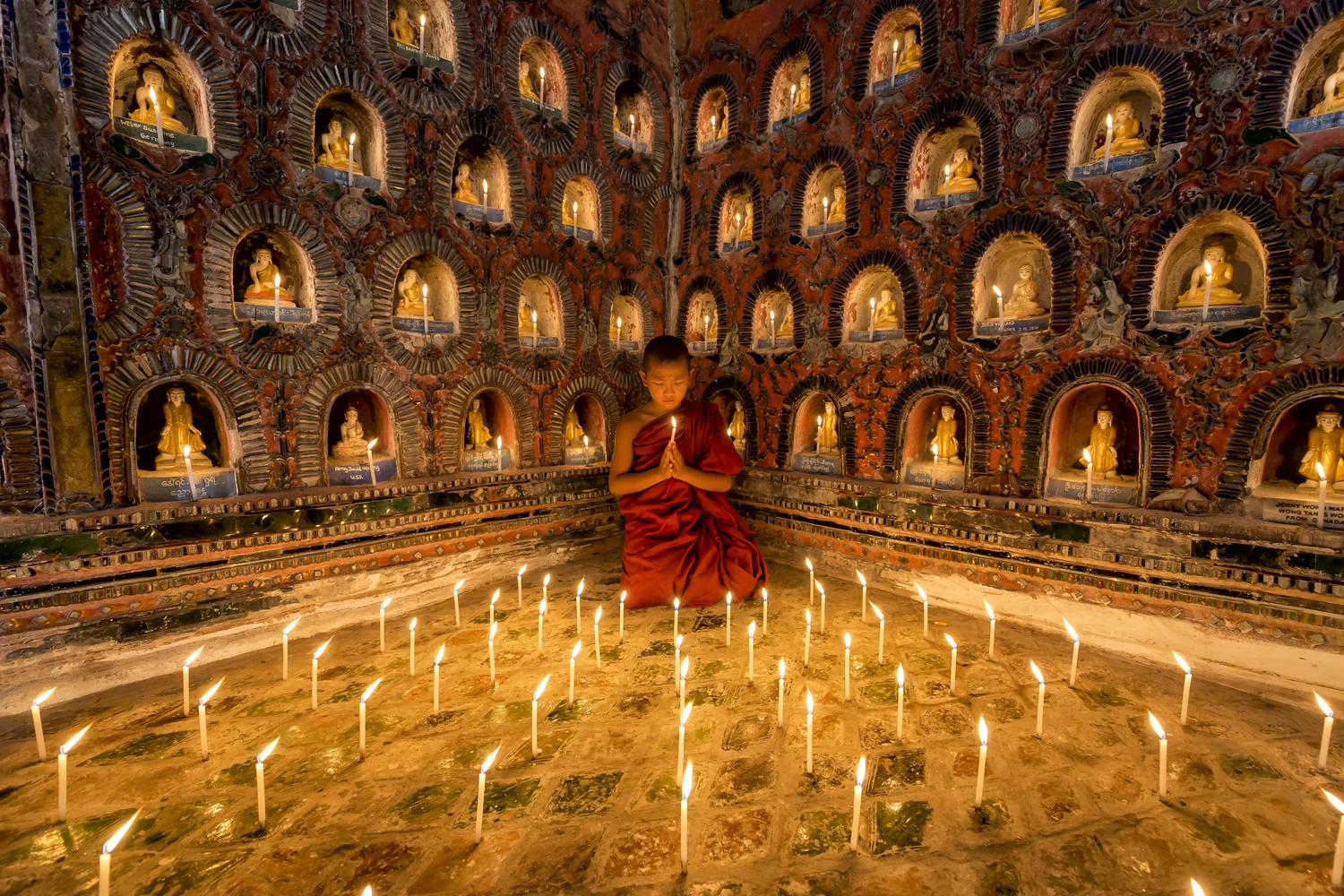
Khitan_Royal_Tombs.
Planning Your Visit: A Practical Guide
When planning your visit to the Khitan Royal Tombs (辽陵及奉陵邑), you’re embarking on a journey through history that offers a glimpse into the grandeur of one of China’s lesser-known dynasties. Nestled in the picturesque landscape of the Liao Valley, these tombs are a testament to the Khitan culture and their imperial legacy. Here’s a practical guide to ensure your visit is both enjoyable and enriching.
Getting There
The Khitan Royal Tombs are located in Inner Mongolia, approximately 30 kilometers from the city of Chifeng. Here are a few ways to reach this historical site:
- By Air: The nearest major airport is in Hohhot, the capital of Inner Mongolia. From there, you can take a domestic flight to Chifeng or a train.
- By Train: Chifeng is well-connected by rail, making it an accessible option from major cities like Beijing. The ride offers scenic views of the landscapes.
- By Car: If you’re feeling adventurous, consider renting a car for a road trip. The drive from Hohhot to Chifeng takes about 4 hours, and you’ll enjoy the beautiful Mongolian steppe along the way.
Getting Around
Once you arrive in Chifeng, here are some options for reaching the tombs:
- Taxi or Ride-Sharing: Taxis are readily available, and ride-sharing apps can make your journey more convenient.
- Guided Tours: A guided tour can enhance your experience, providing insights into the history and significance of the tombs. Many local agencies offer day trips that include transportation.
- Public Transport: Local buses may also connect Chifeng to the tombs, but schedules can be inconsistent, so plan accordingly.
What to Expect
The Khitan Royal Tombs are not just burial sites; they are elaborate mausoleums set in serene natural surroundings. Here’s what to look forward to:
- Architectural Grandeur: The tombs are designed with unique Khitan architectural elements, often incorporating traditional Chinese styles. Look for intricate stone carvings and majestic structures that reflect the grandeur of the Khitan empire.
- Beautiful Landscapes: The tombs are surrounded by rolling hills and lush greenery. Take time to stroll through the grounds, capturing the stunning scenery and the peaceful atmosphere.
- Historical Significance: As you explore the tombs, you’ll uncover the rich history of the Khitan people, a nomadic tribe that established a powerful empire in the 10th century.
Tips for Your Visit
- Dress Comfortably: Wear comfortable shoes suitable for walking, as the site requires some exploration. Dressing in layers is advisable, as temperatures can fluctuate throughout the day.
- Stay Hydrated: Bring plenty of water, especially if you’re visiting during the warmer months. The area can get quite hot, and staying hydrated is essential.
- Respect Local Customs: As with any historical site, it’s important to show respect. Avoid climbing on tombs or disturbing the artifacts.
- Photography: The tombs offer fantastic photography opportunities. Capture the intricate details of the architecture and the beauty of the surrounding landscape. However, be mindful of any restrictions on photography in certain areas.
Nearby Attractions
Consider extending your visit to explore nearby sites:
- Chifeng City: Spend some time in this charming city, known for its vibrant culture and delicious local cuisine.
- Other Historical Sites: The region is rich in history, with several other tombs and ancient sites worth visiting, such as the Eastern Xia Tombs.
Where to Stay
Accommodations range from budget hotels to more luxurious options in Chifeng. Consider staying near the city center for easy access to restaurants and shops. If you prefer a more authentic experience, look for guesthouses that offer a glimpse into local life.
Final Thoughts
Visiting the Khitan Royal Tombs is an opportunity to step back in time and appreciate the legacy of the Khitan people. With careful planning, you can make the most of your trip, enriching your travel experience with history, culture, and breathtaking scenery. Be sure to take your time, soak in the atmosphere, and enjoy the journey through this fascinating chapter of Chinese history.
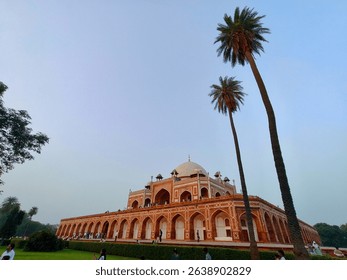
Khitan_Royal_Tombs.
Tickets: Prices, Booking, and Tips
When planning your visit to the Khitan Royal Tombs (辽陵及奉陵邑), it’s essential to know the ticketing details and some handy tips to enhance your experience.
Ticket Prices
Entry to the Khitan Royal Tombs is generally affordable, catering to both local and international visitors. As of now, the ticket price is approximately RMB 60 (around $9 USD) for adults. Discounts may be available for students and seniors, so it’s wise to bring valid identification if you fall into these categories.
Booking Information
Purchasing tickets is straightforward. You can buy them directly at the entrance to the tombs. However, if you prefer to skip the lines, consider booking in advance through reputable travel websites or local tour operators. Some guided tours include entry fees in their packages, which can be a convenient option if you wish to learn more about the site’s rich history during your visit.
Getting There
The Khitan Royal Tombs are located in a scenic area that is best explored with some planning. If you’re staying in nearby cities like Beijing or Shenyang, you can take a train or bus to the region. Once there, hiring a private taxi or joining a guided tour can make navigating between the tombs easier, allowing you to soak in the rich history without the hassle of transportation.
Tips for Your Visit
-
Timing Is Key: Aim to visit early in the morning or late in the afternoon to avoid the crowds and enjoy the tombs in a serene atmosphere. The light during these times also makes for stunning photographs!
-
Wear Comfortable Shoes: The tombs are set in expansive grounds, and you’ll likely be doing a fair amount of walking. Comfortable footwear will make your exploration much more enjoyable.
-
Stay Hydrated: Make sure to bring water, especially during the warmer months. There may not be many places to buy refreshments on-site.
-
Consider a Guide: While wandering around the tombs is delightful, a knowledgeable guide can provide invaluable insights into the history and significance of what you’re seeing.
-
Respect the Site: As with any historical site, be mindful of your surroundings. Stick to designated paths and refrain from touching artifacts or climbing on structures.
With these tips in mind, your journey to the Khitan Royal Tombs will be both informative and enjoyable, allowing you to appreciate the grandeur of this significant cultural heritage site in China.
How to Get There: A Complete Transportation Guide
Getting to the Khitan Royal Tombs (辽陵及奉陵邑) is an adventure steeped in history, and the journey itself offers a glimpse into the rich cultural tapestry of China. Here’s your complete transportation guide to ensure a smooth visit to this UNESCO World Heritage Site.
By Air
Nearest Airports:
– Shenyang Taoxian International Airport (SHE): Approximately 1.5 hours away, this is the most convenient airport for international travelers. You can find direct flights from major cities like Beijing, Shanghai, and Guangzhou.
– Changchun Longjia International Airport (CGQ): About 2 hours away, it also serves various domestic and some international routes.
Once at the airport, you can take a taxi or pre-arranged hotel shuttle to your destination.
By Train
Train Services:
– From Beijing: High-speed trains to Shenyang take about 4 hours and are frequent throughout the day. Once you arrive in Shenyang, you can transfer to a local train or bus heading to the Khitan Royal Tombs.
– From Shenyang: There are regular trains to the nearby city of Fushun, which is about a 30-minute drive from the tombs.
Tip: Purchasing train tickets in advance, especially during peak seasons, is advisable. You can easily book tickets through the official China Railway website or at the station.
By Bus
Long-Distance Buses:
– From major cities like Shenyang and Changchun, several long-distance buses head to Fushun. The bus journey from Shenyang to Fushun takes about 1.5 hours.
Local Transport:
– Once in Fushun, you can take a taxi or local bus to the Khitan Royal Tombs, which is about a 30-minute drive away.
By Car
Driving:
– If you prefer to drive, rental cars are available at both Shenyang and Changchun airports. The drive from Shenyang to the tombs takes approximately 1.5 hours, following G202 and S204 highways.
Navigation:
– Use a GPS or a reliable map app for directions. Signs are usually in both Chinese and English, making navigation easier for international travelers.
Guided Tours
Tour Packages:
– Consider booking a guided tour that includes transportation to the Khitan Royal Tombs. Many local travel agencies offer packages that cover transportation, entry fees, and knowledgeable guides to enhance your understanding of the site.
Local Transportation
Taxis and Ride-Sharing:
– Once in the vicinity of the tombs, taxis are readily available. Ride-sharing apps like Didi are also operational in this area, providing a convenient alternative.
Conclusion
Whether you choose to fly, take the train, or embark on a scenic drive, reaching the Khitan Royal Tombs is an integral part of the experience. The journey not only sets the stage for exploring these historic sites but also allows you to appreciate the beautiful landscapes of Northeast China. Prepare for a day filled with history, culture, and breathtaking views as you step into the world of the Khitan dynasty.
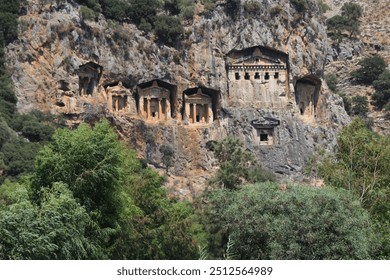
Khitan_Royal_Tombs.
Local Cuisine and Accommodation Nearby
Exploring the Khitan Royal Tombs, a UNESCO World Heritage Site located in the heart of Inner Mongolia, is not just a journey through history but also an opportunity to immerse yourself in the local culture—especially through its cuisine and accommodations. Here’s what you can look forward to in the surrounding area.
Culinary Delights Near the Khitan Royal Tombs
-
Niu Rou Mian (Beef Noodle Soup)
A local favorite, this hearty dish features tender beef slices served over a bed of chewy noodles in a fragrant broth. Often garnished with fresh herbs, chili, and green onions, it’s the perfect comfort food to warm you up after a day of exploration. -
Dumplings (Jiaozi)
These delightful pockets of dough are filled with seasoned meat and vegetables, then boiled or pan-fried to perfection. A must-try when in the region, dumplings are often enjoyed with a dipping sauce made from soy sauce, vinegar, and chili oil. -
Mongolian Hot Pot
Experience the communal dining culture with a hot pot meal where you can cook an array of fresh meats, seafood, and vegetables right at your table. The bubbling broth is typically flavored with spices and herbs, making it a fun and interactive dining experience. -
Baked Breads and Pastries
The area is known for its delicious baked goods, including a variety of breads that are often stuffed with meat or sweet fillings. Look for local bakeries where you can pick up a warm loaf to enjoy on your travels. -
Fermented Milk (Aruul)
For the adventurous palate, try fermented milk products that are a staple in Mongolian cuisine. These tangy and creamy delights can be found in local markets and are celebrated for their health benefits.
Comfortable Stays Nearby
-
Khitan Hotel
Located just a short drive from the Khitan Royal Tombs, this hotel offers comfortable rooms with modern amenities. Guests can enjoy traditional Mongolian decor and a restaurant serving local dishes, making it a convenient base for your explorations. -
Inner Mongolia Grand Hotel
This upscale hotel provides a luxurious experience with spacious rooms, a spa, and fine dining options. It’s an excellent choice if you’re looking to indulge after a day of sightseeing, with easy access to the tombs and surrounding attractions. -
Mongolian Yurt Stays
For a truly unique experience, consider staying in a traditional Mongolian yurt. Many local families offer yurt accommodations, giving you a taste of nomadic life. Enjoy the stunning landscapes and a chance to connect with local culture. -
Hostels and Guesthouses
If you’re traveling on a budget, there are several hostels and guesthouses offering affordable accommodation options. These places often provide a friendly atmosphere and the chance to meet fellow travelers. -
Boutique Hotels
For those seeking something more intimate, boutique hotels in the area often feature personalized service and charming decor. Look for options that highlight local art and design, adding an extra layer of authenticity to your stay.
Whether you’re indulging in flavorful local dishes or relaxing in comfortable accommodations, the area around the Khitan Royal Tombs promises to enrich your travel experience in Inner Mongolia. Enjoy your journey!
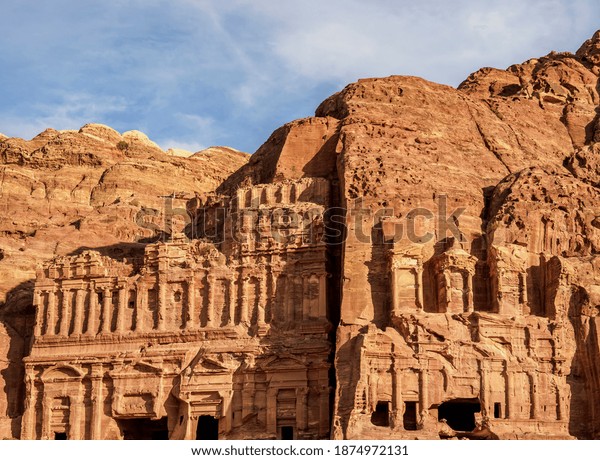
Khitan_Royal_Tombs.
Frequently Asked Questions
Frequently Asked Questions about the Khitan Royal Tombs
1. What are the Khitan Royal Tombs?
The Khitan Royal Tombs, also known as Liao Ling, are the burial sites of the Khitan emperors of the Liao dynasty, which ruled from 907 to 1125 AD. These tombs are significant historical and cultural relics that showcase the architectural styles and burial customs of the Khitan people.
2. How do I get to the Khitan Royal Tombs?
The Khitan Royal Tombs are located near the city of Tongliao, in Inner Mongolia, China. The most convenient way to reach them is by taking a flight to Tongliao Airport, followed by a short taxi ride to the site. Alternatively, you can take a long-distance train or bus from major cities like Beijing or Hohhot.
3. What is the best time to visit the Khitan Royal Tombs?
The ideal time to visit the Khitan Royal Tombs is during the spring (April to June) and autumn (September to November) months when the weather is mild and pleasant. Summer can be hot, while winter temperatures can drop significantly, making outdoor exploration less enjoyable.
4. Are there guided tours available?
Yes, there are several guided tours available that include visits to the Khitan Royal Tombs. These tours often provide valuable historical insights and context that enhance your experience. You can book a tour through local travel agencies or online platforms specializing in Chinese history and culture.
5. What should I wear during my visit?
Comfortable clothing and sturdy shoes are highly recommended, as you may need to walk around the expansive site. Depending on the season, it’s wise to dress in layers, as temperatures can fluctuate throughout the day. Don’t forget to wear sunscreen and a hat if you’re visiting during the warmer months!
6. Are there facilities available at the site?
Yes, the Khitan Royal Tombs site has basic facilities, including restrooms and small kiosks selling refreshments. However, it’s advisable to bring your own water and snacks, especially if you plan to explore the area for an extended period.
7. Can I take photographs at the Khitan Royal Tombs?
Photography is generally allowed, but it’s respectful to check for any specific restrictions at certain locations within the site. Capturing the stunning architecture and serene landscapes can make for great memories of your visit!
8. Is there an entrance fee to visit the Khitan Royal Tombs?
Yes, there is typically a small entrance fee to access the Khitan Royal Tombs. The fee may vary, so it’s a good idea to check the latest information online or inquire at your accommodation before your visit.
Final Thoughts on Your Trip
As you conclude your journey through the magnificent Khitan Royal Tombs, take a moment to reflect on the rich tapestry of history, artistry, and culture that envelops you. These ancient burial sites, shrouded in the mystique of the Khitan dynasty, offer more than just a glimpse into the past; they invite you to explore the profound connection between the living and the dead, art and architecture, nature and spirituality.
Walking through the serene landscapes, adorned with intricate carvings and majestic structures, you can almost hear the whispers of the emperors who once roamed these grounds. Each tomb tells a unique story, revealing the legacies of those who shaped this fascinating era. Whether marveling at the grandeur of the architecture or simply soaking in the tranquil atmosphere, your visit to these royal tombs is sure to leave a lasting impression.
As you prepare to depart, don’t forget to capture the moments that resonated with you, be it the vibrant colors of the tombs against the lush landscape or the peaceful serenity that envelops the area. Consider sharing your experiences and stories with fellow travelers, for these tales enrich the journey for all.
Remember, the adventure doesn’t end here. The Khitan Royal Tombs are just one chapter in the endless narrative of exploration that awaits you in this beautiful region. Allow the allure of history and the charm of the landscape to inspire your future travels, ensuring that your heart remains open to the wonders that lie ahead. Safe travels!